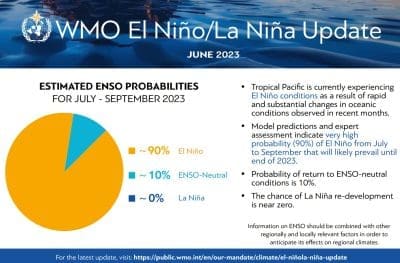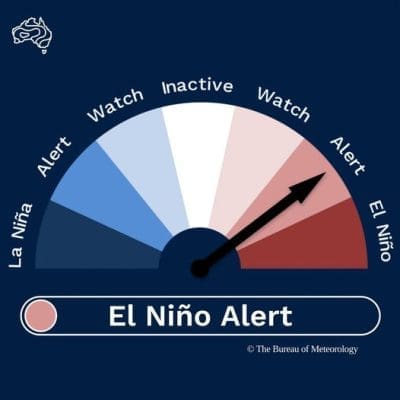El Niño conditions have developed in the tropical Pacific for the first time in seven years, the World Meteorological Organization (WMO) has announced this week.
 The WMO – which says it combines forecasts and expert guidance from around the world – says there is now a 90 percent probability of the El Niño event continuing during the second half of 2023.
The WMO – which says it combines forecasts and expert guidance from around the world – says there is now a 90 percent probability of the El Niño event continuing during the second half of 2023.
The WMO says El Niño occurs on average every two to seven years, and episodes typically last nine to 12 months.
El Niño events are typically associated with increased rainfall in parts of southern South America, the southern United States, the Horn of Africa and central Asia.
 In contrast, El Niño can also cause severe droughts over Australia, Indonesia, parts of southern Asia, Central America and northern South America
In contrast, El Niño can also cause severe droughts over Australia, Indonesia, parts of southern Asia, Central America and northern South America
Generally, El Niño has the opposite effect of the recent La Niña, which ended earlier in 2023.
While other meteorological agencies have declared El Niño, Australia’s Bureau of Meteorology has not yet joined them.
The Bureau’s ‘ENSO Dial’ remains at the ‘Alert’ position, meaning there are signs of an El Niño forming in the coming season, supported by signs from both the Pacific Ocean and the overlying atmosphere, with long-range climate model forecasts also suggesting an event may occur.When the ENSO Outlook has reached Alert, an event has developed around 70 percent of the time.
“When we shift the dial to Alert, this does not guarantee an El Niño or La Niña event will form. There’s still about a 30% chance an event will not develop,” the Bureau ENSO explanation page states.

